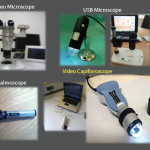
Maria Maarbes / Shutterstock.com
MADRID—Researchers have found that systemic lupus erythematosus (SLE) is independently linked with bipolar disorder and say the findings point to a need for greater awareness of psychiatric problems in patients with SLE.
In work led by investigators at Tel Aviv University in Israel and presented at the 2017 Annual European Congress on Rheumatology (EULAR), researchers analyzed data from the medical database of Clalit Health Services, which includes a chronic disease registry with continuous real-time input. The study included data for 5,018 SLE patients and 25,090 matched controls.1
Investigators found a higher prevalence of bipolar disorder among SLE patients than among controls—0.62% vs. 0.26% (P<0.001). In a multivariate analysis, SLE was found to be independently associated with the disorder, with an odds ratio of 1.74 (P=0.012).
“Neuropsychiatric manifestations among lupus patients are present in virtually all lupus patients,” said Shmuel Tiosano, MD, who presented the findings and is a rheumatologist and researcher at Sheba Medical University. “We think the neuroinflammation is a key factor here.”
Overlap exists among SLE patients who complain of physical difficulties and bipolar disorder patients, because they also have physical complaints and often neglect their health. In this study, research found that bipolar disorder has a link to the SLE. “Their physical complaints, we eventually found out, had been a manifestation of lupus,” he said. “That’s what’s so interesting about it.
“Lupus patients usually have many, many physical complaints and all sorts of emotional complaints,” Dr. Tiosano said. Caregivers should try to distinguish between depressive symptoms due to their underlying illness and signs there could be a psychiatric disease at work.
Neuropsychiatric symptoms develop in 20–70% of SLE patients and half the time these symptoms develop ahead of SLE. The onset of mood symptoms can happen any time in the course of SLE and at any severity level of disease.
Nailfold Capillaroscopy
In another study, researchers in Belgium conducted the first systematic review of nailfold capillaroscopy and SLE, finding correlations they say merit further investigation.2 Nailfold changes on capillaroscopy have been seen in SLE, but no clear role has yet been established for the approach in classification or staging.
In this study, researchers did a literature review of all published studies involving patients with SLE who’d had capillaroscopy performed. They reviewed findings from 27 studies after excluding other studies based on such things as ACR criteria for SLE not being met and having fewer than five patients in a study.

